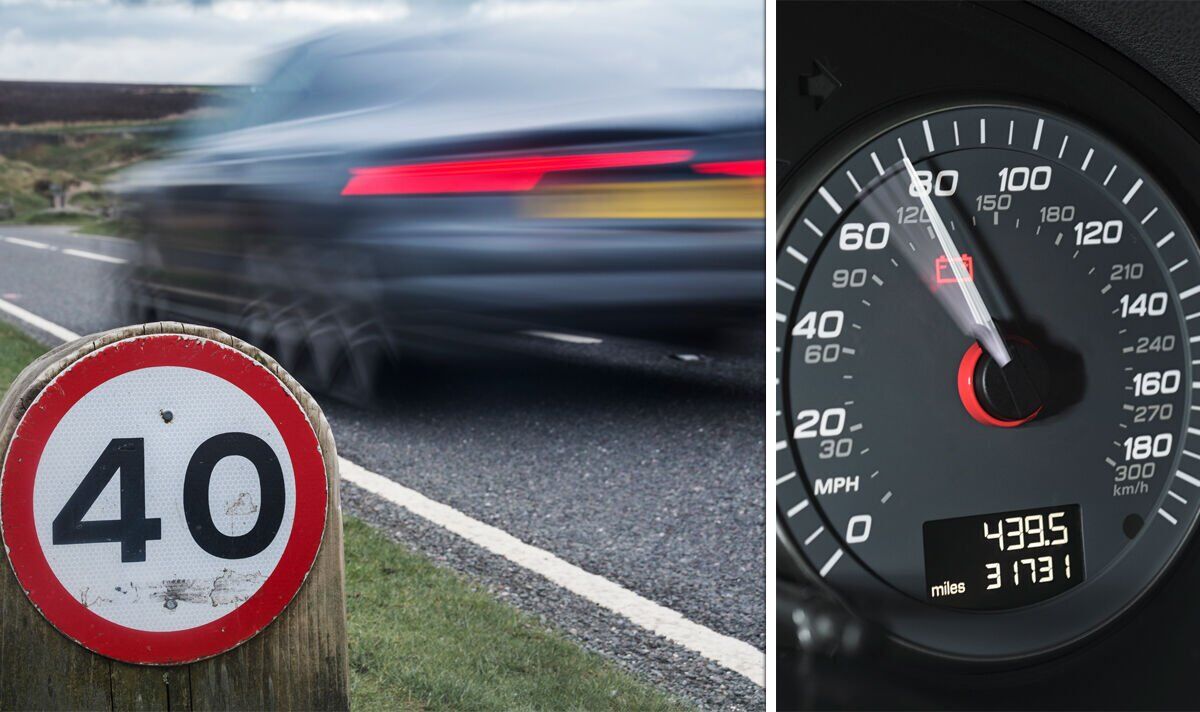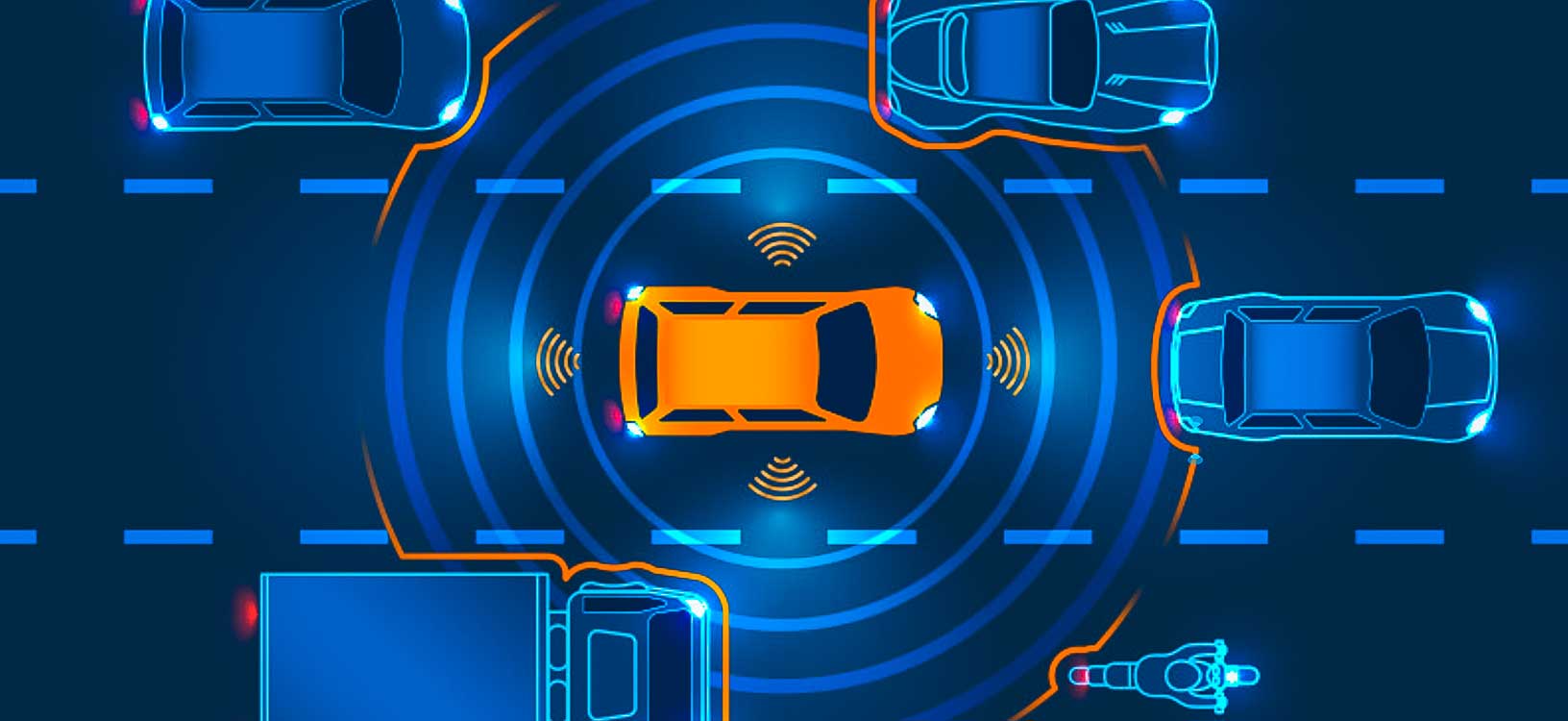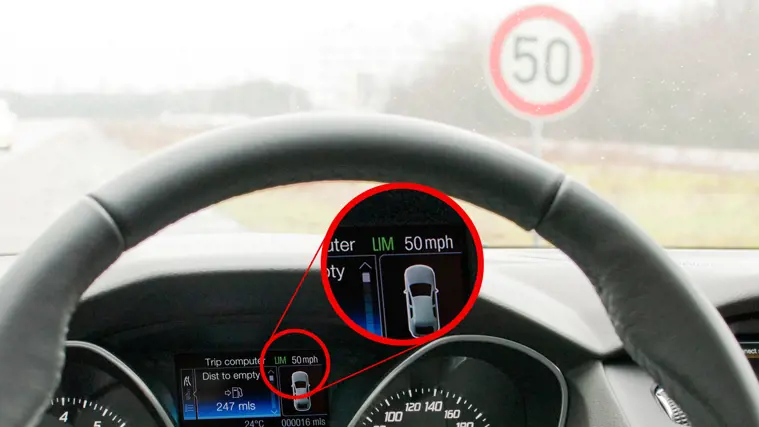Speed control in vehicles matters more today than it ever has. Whether you manage trucks or drive a school bus, staying within limits cuts accidents, reduces wear, and saves fuel. But not every system handles speed the same way.
The two most common options—governors and limiters—share a purpose, but differ wildly in execution. In this article, we’ll break down how they work, when to use them, and why the difference is more than technical—it affects safety, cost, and compliance.
Key Takeaway:
Speed governors physically control how fast the engine runs. Think levers and mechanical responses. Speed limiters, on the other hand, get their instructions from electronics—ECUs, GPS data, and onboard sensors. Governors are basic but dependable. Limiters are smarter, more adaptable, and built for precision.
What Is a Speed Governor?

In older or less tech-heavy vehicles, these systems aren’t digital. They work straight through mechanical or electromechanical parts—no GPS, no fancy dashboards. Just raw control, right at the engine.
How Does a Speed Governor Work?
At its core, a speed governor measures the rotational speed (RPM) of the engine’s crankshaft. When the RPM exceeds a predefined limit, the governor activates to either:
-
Reduce the throttle opening, or
-
Cut down fuel delivery to the engine.
This results in a controlled deceleration or stabilization of speed, even if the driver continues to press the accelerator.
Types of Speed Governors
There are several types of speed governors, each using different principles of physics and mechanics:
1. Mechanical (Centrifugal) Governors
These are the most traditional type and are purely mechanical—no electronics involved.
-
How it works: Small spinning weights (called flyweights) are attached to a rotating shaft linked to the engine.
-
As engine speed increases, centrifugal force causes the flyweights to move outward.
-
This movement adjusts a spring-loaded linkage that reduces the throttle opening, slowing the engine.
This system is simple, durable, and works well in environments where electronics might fail—like dusty farms or remote mining trucks.
2. Hydraulic Governors
Used mainly in diesel engines and large industrial machines.
-
Use engine oil pressure to move actuators that adjust fuel delivery.
-
Often combined with a servo mechanism for smoother response.
-
Better suited for engines that need steady speed under varying load, such as generators or water pumps.
3. Pneumatic Governors
Similar to hydraulic types but use air pressure instead of oil. These are less common and used in specific machinery.
-
Uses air pressure changes to adjust throttle and control speed.
-
Simple, low-cost, no electricity needed.
-
Less precise, slower response, affected by dirt/moisture.
-
Common in small engines and older machinery.
4. Electronic Governors
These are a hybrid of traditional governors and modern speed limiters.
-
Use electromagnetic sensors to read engine RPM.
-
Feed data to a basic governor control module, which adjusts the throttle or injector pump.
-
Still act on internal engine mechanisms rather than GPS or ECU networks.
They’re ideal for fleets that want precise control but still operate older vehicle platforms.
Key Components Involved
Understanding the parts helps explain why these systems are robust but harder to override.
| Component | Function |
|---|---|
| Flyweights | React to RPM using centrifugal force |
| Throttle Lever | Controls engine’s air/fuel intake |
| Linkage Arms | Mechanically connect flyweights to throttle mechanism |
| Spring or Damper | Balances force from flyweights |
| Actuator (in modern versions) | Moves throttle using electric or hydraulic power |
Where Are Speed Governors Used?
-
School Buses: Especially in India, UAE, and Africa, where legal speed limits are enforced to protect students.
-
Delivery Trucks: To reduce fuel consumption and improve safety.
-
Mining Vehicles: Where overspeeding could lead to dangerous rollovers.
-
Tractors and Combines: Where precise ground speed is essential for planting or harvesting.
In many cases, governors are legally mandated, especially in commercial fleets or public service vehicles.
Advantages of Speed Governors
-
Tamper-resistant: Mechanical systems are hard to bypass without tools.
-
Reliable in rugged environments: No dependency on electronics or network coverage.
-
Low maintenance: Especially in older diesel engines.
-
Stable engine operation: Prevents over-revving, increasing engine lifespan.
Limitations of Speed Governors
-
Lack of precision: Not as accurate as GPS-based systems.
-
Static control: Can’t adjust speed based on environment or traffic.
-
No integration with telematics: Doesn’t offer real-time tracking or remote updates.
Real-World Example
Picture a diesel truck winding through a dirt road in rural Kenya. It’s got an old-school mechanical speed governor clamped onto the engine. Once the speed nudges past 80 km/h, the system kicks in. A spinning weight senses the rising RPM and clamps down on the fuel. The pedal might be buried to the floor, but the engine says, “That’s far enough.” The truck eases back, like it’s being reined in by an invisible hand.
What Is a Speed Limiter?
A speed limiter is no longer just a mechanical gadget tucked under the hood. It’s smarter now—digital at its core. Instead of relying on levers and springs, it taps into the vehicle’s electronics. It talks to sensors. It processes data. It even checks in with outside sources, like GPS or traffic systems. All to do one thing: cap your speed before your foot does something regrettable.
These systems are designed for precision, compliance, and adaptability, making them essential in modern fleet operations, urban driving, and even consumer vehicles in many countries today.
How Does a Speed Limiter Work?
The core of a speed limiter system is the Engine Control Unit (ECU)—an onboard computer that acts like the brain of the vehicle. It receives real-time data from:
-
Wheel speed sensors
-
GPS satellites
-
Traffic sign recognition cameras
-
Digital maps
-
Vehicle position (via GNSS)
-
Throttle position sensors
Once the vehicle approaches or exceeds a pre-set speed threshold, the ECU either:
-
Restricts throttle input, preventing further acceleration, or
-
Engages braking systems or engine retarding functions in more advanced vehicles
This all happens in milliseconds, often without the driver noticing a physical intervention, making speed control smoother and smarter.
Types of Speed Limiters
There are two main categories, based on how they behave:
1. Passive Speed Limiters
These are the most basic type and often found in older fleet vehicles or as aftermarket modules.
-
They don’t actively adjust speed unless the vehicle hits the preset threshold.
-
Once that speed is reached, the system caps engine power to prevent acceleration.
-
They typically operate using the OBD-II port, intercepting throttle signals.
Example: A delivery van limited to 90 km/h on highways will accelerate freely until it hits 90. Then, the limiter prevents any more power from reaching the wheels.
2. Active or Intelligent Speed Limiters (ISA)
These are advanced, context-aware systems that adapt based on real-time data.
They not only monitor the vehicle’s speed, but also its location, road type, posted speed limits, and even weather conditions in some cases. The system automatically adjusts speed as needed.
ISA (Intelligent Speed Assistance), mandated by the EU for all new vehicles since July 2022, is a perfect example. ISA combines:
-
GPS positioning
-
Camera-based sign recognition
-
Map data and traffic inputs
This allows the car to know, for example, that it’s entering a school zone with a 30 km/h limit and automatically reduce the throttle—even if the driver doesn’t.
Key System Components and Semantic Entities
| Component | Role |
|---|---|
| ECU (Engine Control Unit) | Central processor that interprets vehicle speed and limits commands |
| GPS Module | Tracks real-time vehicle location and correlates it with mapped zones |
| Digital Speed Maps | Provides the legal speed for each road segment (updated via OTA updates) |
| CAN Bus (Controller Area Network) | Allows communication between different vehicle systems (brakes, throttle, ECU) |
| ADAS Sensors | Optional—include traffic sign recognition cameras, radar, lidar |
| OBD-II Interface | Common for installing aftermarket speed limiter devices |
These components work together using real-time feedback loops, a concept from control theory, ensuring consistent regulation of speed with minimal lag.
Geofencing and Map-Based Speed Limiting
One of the smartest features of modern speed limiters is geofencing. The vehicle recognizes when it enters specific areas—like:
-
School zones
-
Hospital areas
-
Urban traffic-calming zones
Through digital mapping and GPS, the system can enforce speed limits automatically in those zones, even if the general speed limit elsewhere is higher.
This is especially useful for fleet compliance, ensuring no vehicle breaks local regulations regardless of the driver’s behavior.
Legal & Regulatory Backing
-
EU Regulation 2021/1958: Requires all new cars sold in Europe to include ISA systems from 2022 onwards.
-
India CMVR Rule 118: Mandates speed limiters on all public transport vehicles.
-
FMCSA (U.S.) Proposal: Suggests mandatory electronic speed limiters on trucks to enhance safety and reduce fuel consumption.
These systems not only support safety but also ensure legal compliance, which is critical for fleet operators, schools, and ride-hailing services.
Advantages of Speed Limiters
-
Highly Accurate: Can restrict speed to within a 1–2 km/h tolerance.
-
Tamper Resistant: Modern ECUs require admin-level credentials to modify limiter settings.
-
Remote Control: Some systems allow fleet managers to update speed limits remotely via telematics.
-
Contextual Awareness: Adapts based on road type, zone, or time of day.
Limitations of Speed Limiters
-
Dependency on GPS: In tunnels or poor signal zones, performance may degrade.
-
Driver Resistance: Some drivers find automatic reductions annoying.
-
Override Risk: If not secured properly, software-based systems can sometimes be disabled.
Real-World Example
Imagine a ride-hailing vehicle in London using an ISA system. As it leaves the highway (70 mph), the system detects entry into a 20 mph residential zone. It uses both GPS data and road sign recognition to automatically reduce the vehicle’s throttle. The driver feels gentle resistance in the pedal but can still override it momentarily (EU ISA systems allow temporary override for safety).
Core Technical Differences
Let’s break it down into a comparison chart:
| Feature | Speed Governor | Speed Limiter |
|---|---|---|
| Control Method | Mechanical or Electromechanical | Digital (ECU, GPS, sensors) |
| Trigger Mechanism | RPM-based throttle adjustment | Speed-based ECU input/output |
| Accuracy | Medium | High (within 1-2 km/h) |
| Adaptability | Low (fixed settings) | High (programmable, zone-based) |
| Override Capability | Hard to override physically | Can be overridden via ECU software (admin-level) |
| Use Case | Engines, especially in heavy-duty transport | Public transport, fleet management, personal vehicles |
ECU Role in Modern Speed Limiters
The Engine Control Unit is the “brain” behind today’s speed limiters. It monitors:
-
Wheel speed sensors
-
Throttle position
-
GPS location
-
Traffic sign recognition systems
When the ECU detects that the vehicle is exceeding a programmed threshold, it sends signals to reduce throttle, limit gear shifting, or even apply braking in smart systems.
For instance, a delivery van fitted with a GPS-based limiter may automatically restrict speed to 60 km/h in a residential zone, but allow 90 km/h on highways.
Mechanical vs. Electronic Control: A Deeper Technical View
Mechanical governors act directly on engine parts using linkages, springs, and hydraulic pressure. They work even without electricity. But they are:
-
Less precise
-
Slower to respond
-
Harder to adjust
In contrast, electronic speed limiters:
-
React in milliseconds
-
Communicate with multiple subsystems via CAN bus
-
Can be updated or tuned via software
This makes electronic systems perfect for modern fleet telematics, where data from thousands of vehicles is monitored remotely.
Compliance and Standards
Speed regulation isn’t just about safety—it’s often a legal requirement. For example:
-
ISO 15622: Sets standards for adaptive cruise and limiter systems.
-
SAE J2194: Covers the performance of speed governing systems.
-
CMVR India: Mandates speed governors for commercial vehicles.
-
EU Regulation 2021/1958: Requires ISA for all new vehicles sold in the EU after 2022.
Without compliant systems, fleet operators risk penalties, vehicle impounding, and even insurance invalidation.
Use Case Scenarios: Which One to Choose?
-
Fleet managers: Go for GPS-based speed limiters to enforce zone-specific limits.
-
School buses: Need tamper-proof mechanical governors for consistent limits.
-
Long-haul trucks: Benefit from a mix—governors for engine safety, limiters for legal compliance.
-
Personal vehicles: Electronic limiters are best, especially when integrated with ADAS (Advanced Driver Assistance Systems).
Choosing the right system depends on your vehicle type, legal requirements, and environment.
Common Misconceptions
Let’s clear up a few myths:
-
“They’re the same thing.” → False. They work on different principles.
-
“Governors are outdated.” → Not always. They’re still reliable in specific contexts.
-
“Limiters can’t be bypassed.” → Not true. Some can be overridden if not locked down by admin software.
-
“Only trucks use these.” → Nope. Even electric scooters and e-bikes now use speed limiting tech.
Future Trends in Speed Regulation

The future of speed control is smart, connected, and predictive. Here’s what’s coming:
-
AI-based limiters that learn from driver habits
-
V2X communication (Vehicle-to-Everything) that adjusts speed based on nearby vehicles
-
Geofenced school zones that trigger automatic deceleration
-
Cloud-based ECU updates for real-time compliance
These innovations will make roads safer—and maybe take the speed control decision completely out of the driver’s hands.
Conclusion
Speed governors and speed limiters both serve one goal: keeping vehicles safe and under control. But how they do it is very different. Governors work inside the engine using mechanical or RPM-based control, while limiters rely on digital brains—ECUs, GPS, and sensors.
Choosing the right system isn’t optional—it’s the law in many places, and skipping it can burn a hole in your budget. If you’re running a fleet or just keeping tabs on one vehicle, knowing how these limiters work gives you a real edge. You’ll make sharper calls on safety, avoid fines, and keep things running smoother, longer.
FAQ
1: What’s the main difference between speed governors and speed limiters?
A governor controls engine RPM mechanically or electronically. A limiter controls vehicle speed using digital systems like ECU and GPS.
2: Which one is more accurate?
Speed limiters are more precise and programmable.
3: Can I install both in the same vehicle?
Yes, especially in fleets. Some use governors for engine protection and limiters for legal speed compliance.
4: Are these systems legally required?
In many places, yes—especially for commercial and passenger transport vehicles.
5: Do modern cars have speed limiters?
Many do, especially in Europe and Asia. Some even come with intelligent limiters as part of ADAS.

